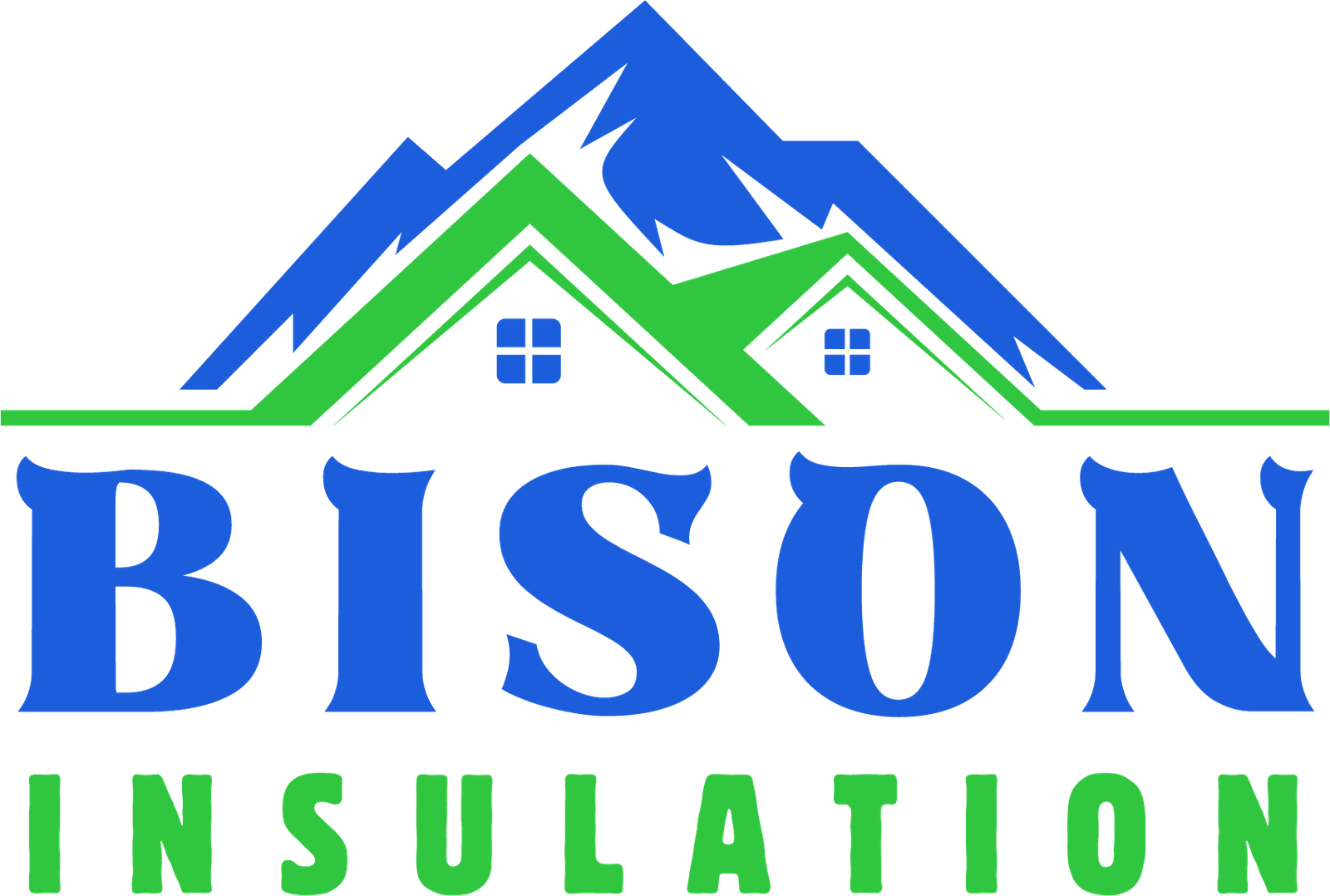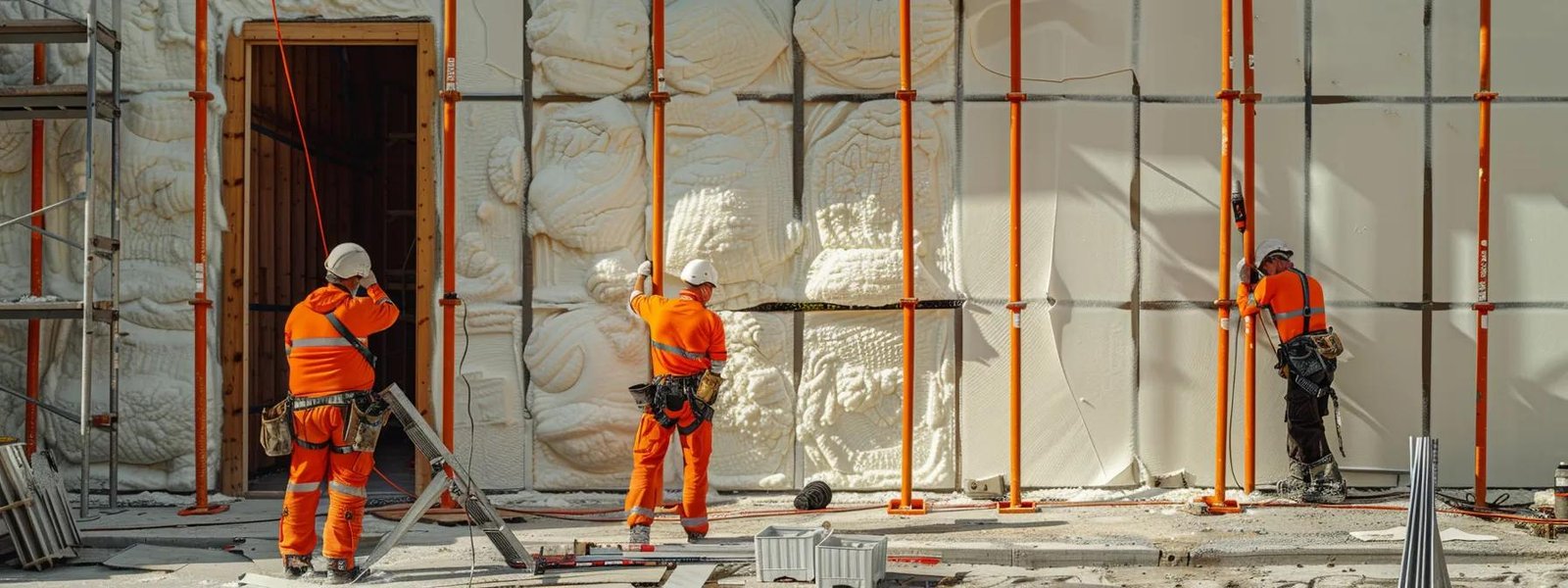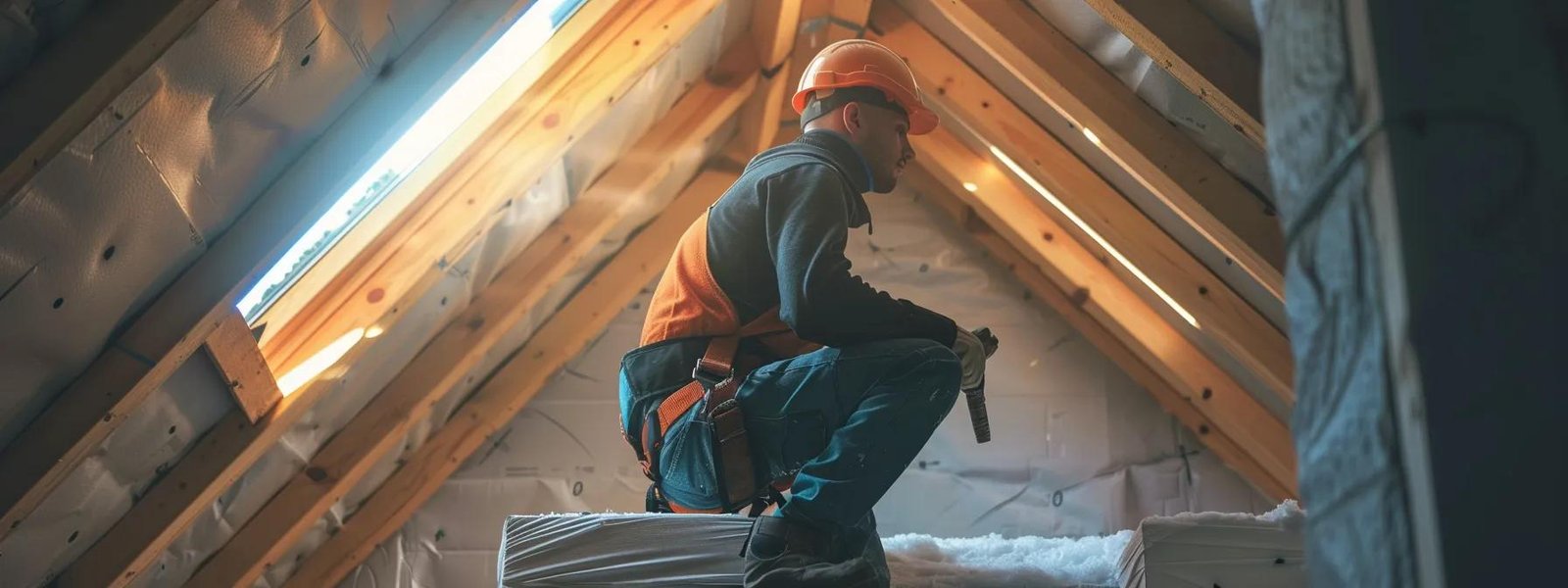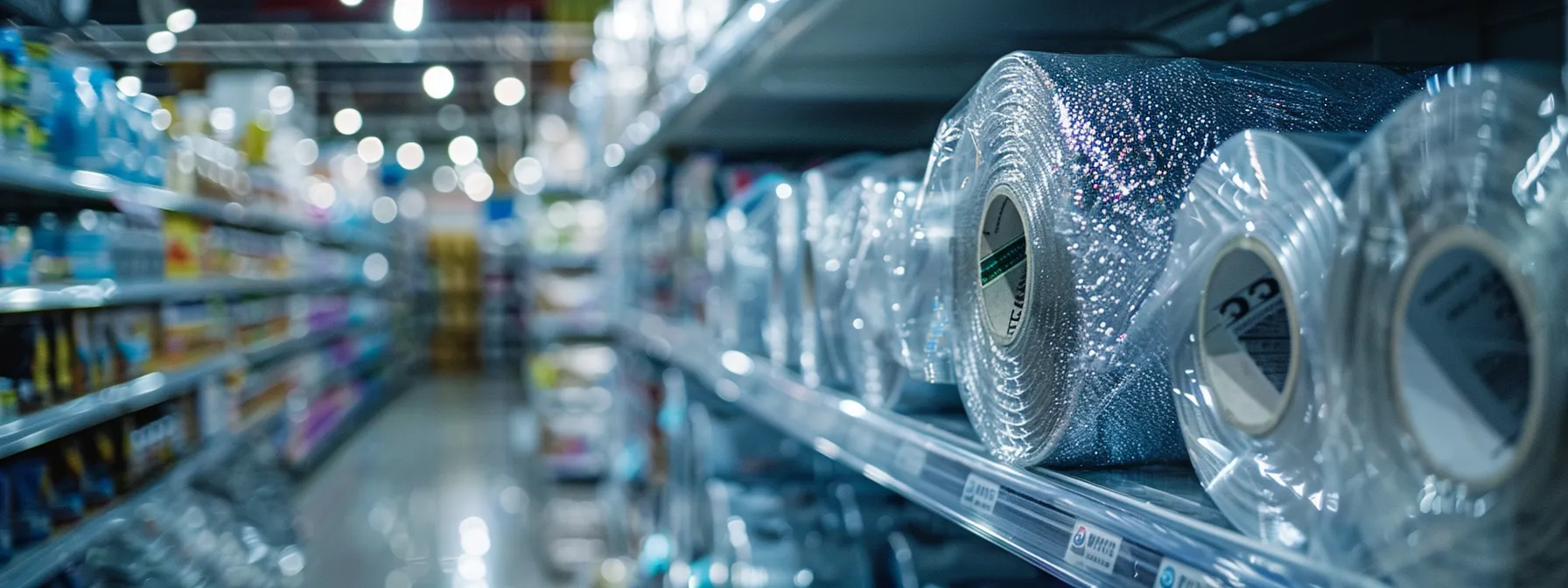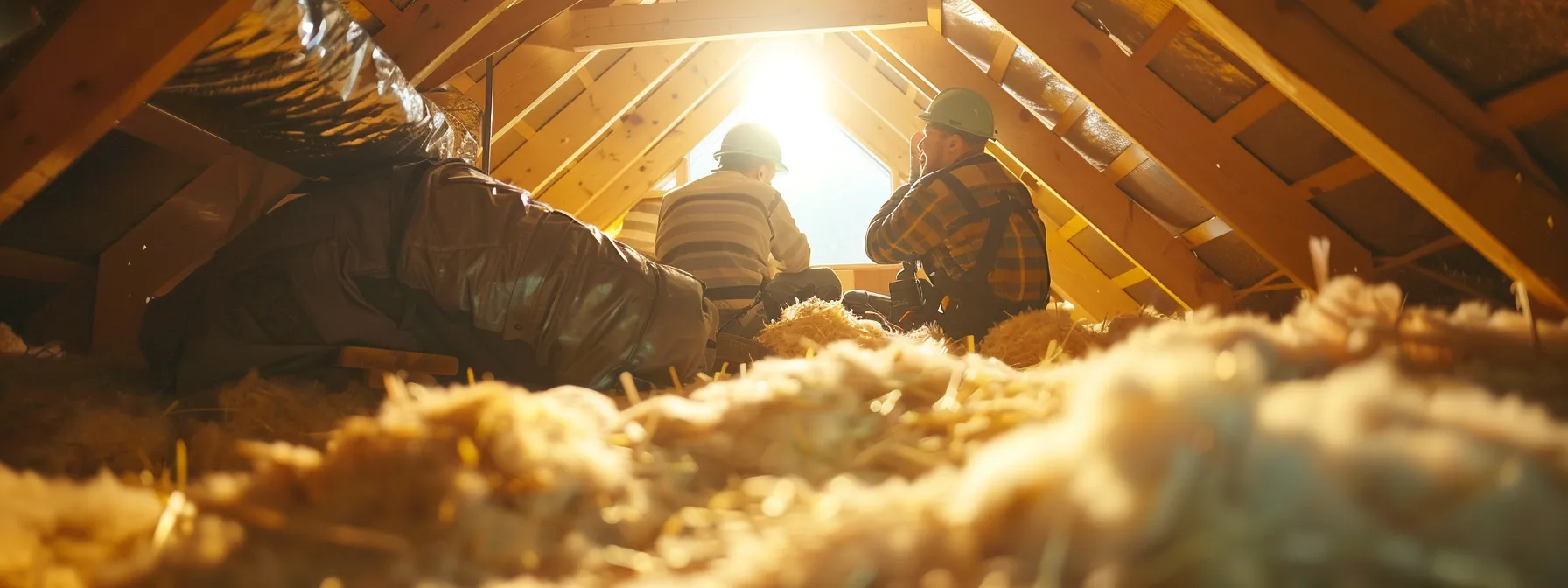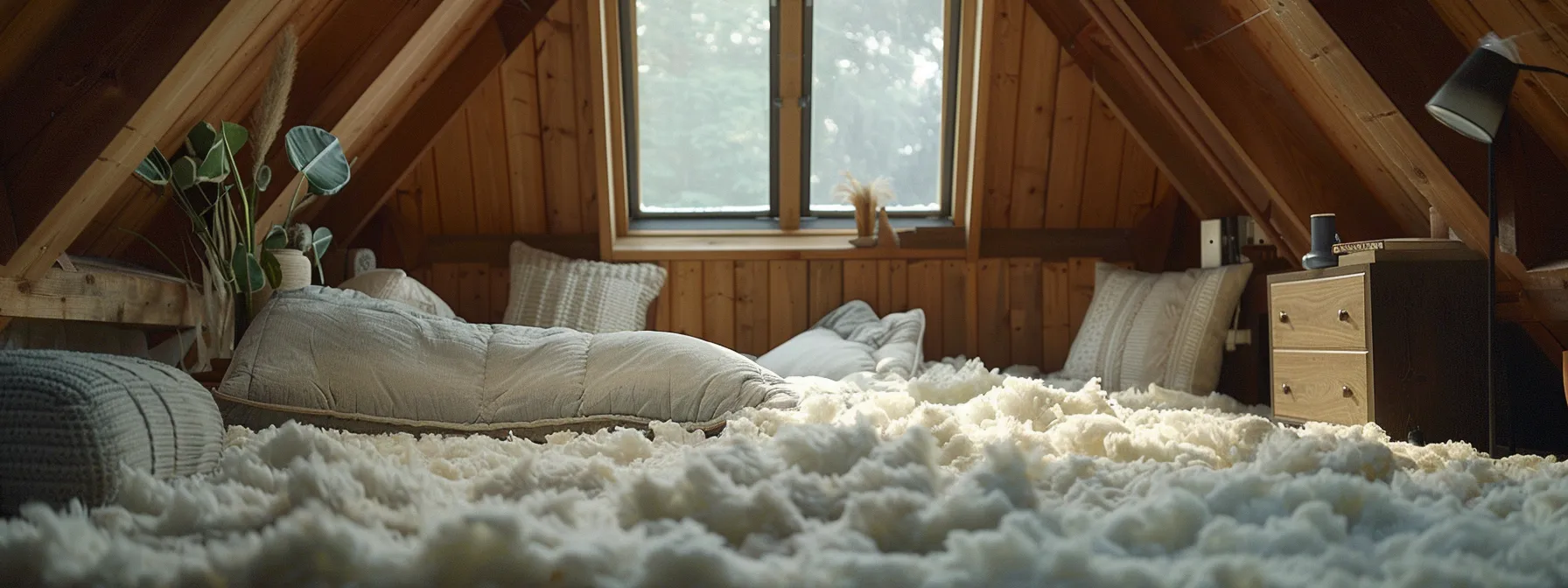Uncover Expert Tips to Select the Ideal Spray Foam Insulation Company Near You – Find Top-Rated Foam Insulation Companies Here
Continue readingExploring the Superior Benefits of Bison Wool Insulation Over Traditional Options
Are you looking for an insulation solution that outperforms traditional options? Bison wool insulation offers unique advantages that can enhance your property’s energy efficiency and comfort. In this article, I will explore the benefits of bison insulation compared to materials like sheep wool and synthetic options, highlighting its superior thermal performance and environmental advantages. By understanding these key points, you can make an informed decision that addresses your insulation needs while promoting a healthier living space. Let’s dive into how bison wool insulation can be the ideal choice for your home or business.
Understanding the Benefits of Bison Wool Insulation
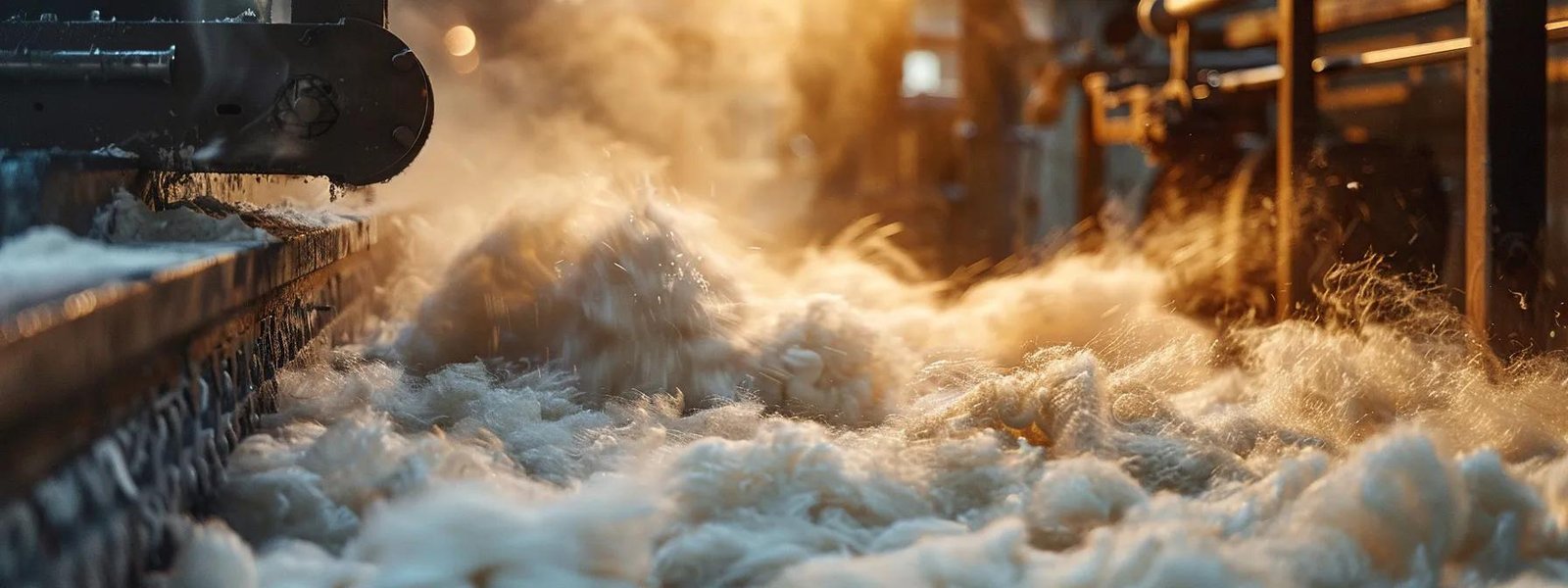
Bison wool insulation stands out due to its unique characteristics, such as the natural insulating properties of bison fibres and bison insulation. I will explain how these fibres are processed through carding and the role of lanolin in enhancing their effectiveness. Additionally, I will discuss the production methods that ensure high-quality insulation, making it a superior choice over traditional options like nylon, especially in Alberta.
The Unique Characteristics of Bison Wool
Bison wool possesses unique characteristics that set it apart from traditional insulation materials like mohair and merino. The natural fibres of bison wool provide excellent thermal insulation, making it an effective choice for maintaining comfortable indoor temperatures. Additionally, the processing of these fibres through carding enhances their structure, allowing for better air retention and insulation performance compared to synthetic options like Smartwool and nylon.
Another notable feature of bison wool is its natural lanolin content, which contributes to its moisture-wicking properties. This means that bison wool can effectively manage humidity, preventing the growth of mould and mildew, a common concern in insulation. When compared to other natural fibres, such as muskox, bison wool offers a sustainable and eco-friendly alternative that meets the insulation needs of both residential and commercial properties.
Natural Insulating Properties of Bison Fibres
The natural insulating properties of bison fibres make them an exceptional choice for various applications, including insulation for homes and commercial spaces. Unlike traditional materials such as alpaca or synthetic options, bison wool offers superior thermal regulation, ensuring that indoor environments remain comfortable regardless of external temperatures. This quality is particularly beneficial for those looking to maintain energy efficiency in their properties, as it helps reduce heating and cooling costs.
In addition to its thermal benefits, bison wool‘s moisture-wicking capabilities enhance its performance in insulation. This feature prevents the accumulation of humidity, which can lead to mould growth—a common issue with other materials like nylon or even some types of carpet. By choosing bison wool insulation, I can confidently provide a solution that not only meets the insulation needs of residential and commercial properties but also promotes a healthier living environment free from moisture-related concerns.
How Bison Wool Insulation Is Produced
The production of bison wool insulation begins with the careful harvesting of bison fibres, which are known for their lightweight and durable characteristics. After collection, the fibres undergo a carding process that aligns them, enhancing their structure and creating a cushion-like effect that improves insulation performance. This method not only maximizes the thermal properties of the wool but also ensures that the final product is suitable for various construction applications, including residential and commercial projects.
Once carded, the bison wool is treated to maintain its natural lanolin content, which contributes to its moisture-wicking abilities. This treatment is crucial for ensuring that the insulation can effectively manage humidity levels, making it an excellent choice for backpacking and other outdoor applications. By choosing bison wool insulation, I can provide a solution that combines superior thermal regulation with the lightweight benefits needed for efficient construction and comfortable living environments.
Bison Wool vs. Traditional Insulation Materials
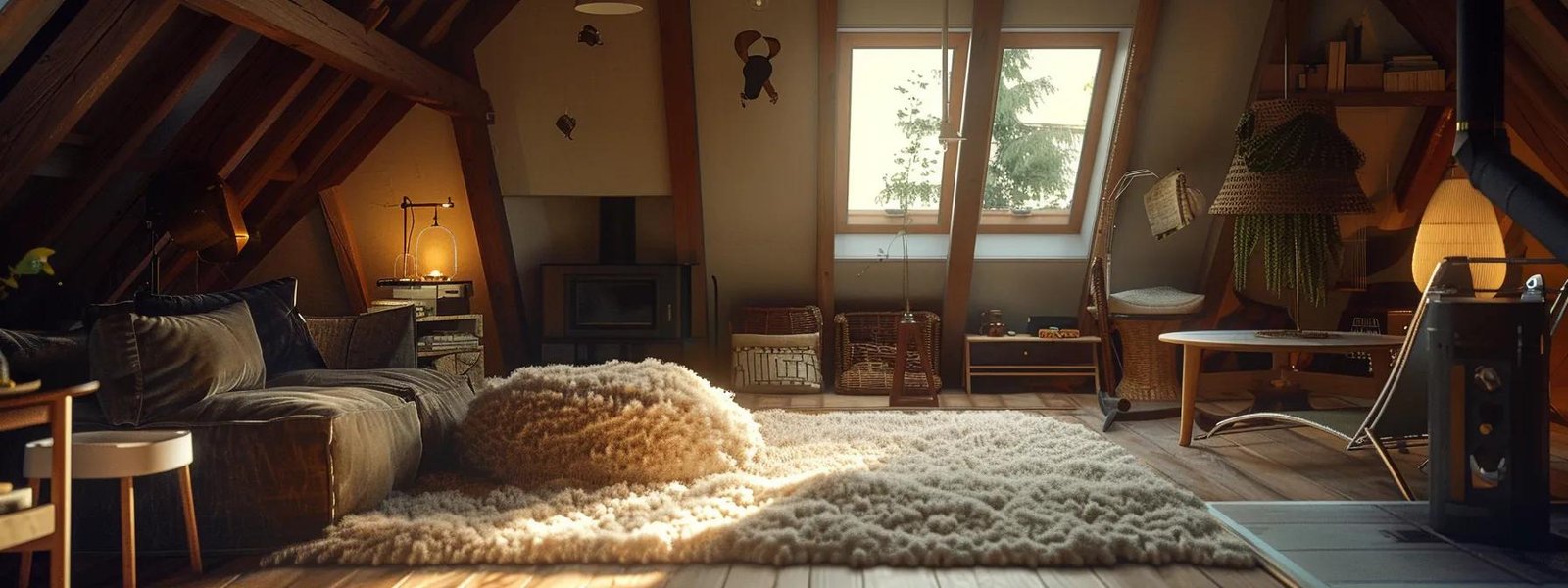
In this section, I will compare bison wool insulation with traditional options like fiberglass, mineral wool, and cellulose insulation. I will evaluate how bison, as a natural fiber, outperforms these materials in terms of thermal regulation and moisture management. Additionally, I will discuss the performance differences across these common insulators, highlighting the advantages of using bison wool for effective insulation solutions.
Comparing Bison Wool and Fiberglass Insulation
When comparing bison wool insulation to fiberglass, I find that bison wool offers superior moisture management. Unlike fiberglass, which can absorb water and lead to mould growth, bison wool‘s natural lanolin content provides effective waterproofing, ensuring a healthier indoor environment. This characteristic is particularly beneficial for properties in humid climates, where moisture control is essential for maintaining comfort and preventing damage.
Additionally, bison wool insulation is more sustainable than fiberglass, which is often made from synthetic materials. The natural fibres of bison wool, akin to the softness of fur, create a comfortable and effective barrier against temperature fluctuations. This not only enhances thermal regulation but also aligns with eco-friendly building practices, making bison wool a smart choice for those looking to invest in long-lasting insulation solutions.
Evaluating Bison Wool Against Mineral Wool
When I evaluate bison wool insulation against mineral wool, I notice significant differences in performance, particularly in moisture management. Mineral wool can absorb water, which may lead to issues like mould growth, especially in climates with high humidity. In contrast, bison wool‘s natural lanolin content provides excellent moisture-wicking properties, ensuring a healthier indoor environment that is less prone to dampness and related problems.
Furthermore, bison wool insulation offers superior thermal regulation compared to mineral wool. This means that whether I’m insulating a roof or a wall, bison wool maintains comfortable indoor temperatures more effectively. The lightweight nature of bison wool also makes it easier to handle and install, similar to finding the right shoe size—when it fits well, it performs better. By choosing bison wool, I can confidently provide insulation solutions that meet the needs of both residential and commercial properties while promoting energy efficiency.
Bison Wool Compared to Cellulose Insulation
When I compare bison wool insulation to cellulose insulation, I notice that bison wool offers superior thermal performance and moisture management. The natural fibres of American bison create a felt-like structure that enhances insulation efficiency, while cellulose can sometimes struggle with moisture retention, leading to potential mould issues. This makes bison wool a more reliable choice for maintaining comfortable indoor temperatures, especially in areas prone to humidity.
Additionally, the versatility of bison wool allows for creative applications, such as weaving it into scarves or using it in slipper designs, showcasing its adaptability beyond insulation. This unique characteristic not only highlights the aesthetic potential of bison wool but also reinforces its eco-friendly nature, making it a sustainable option for both residential and commercial properties. By choosing bison wool, I can provide insulation solutions that are effective, sustainable, and beneficial for a healthier living environment.
Performance Differences Across Common Insulators
When I compare the performance of bison wool insulation to traditional options like fiberglass and cellulose, I notice significant advantages in thermal regulation and moisture management. Bison wool, derived from the natural fibers of American bison, provides superior insulation that keeps indoor spaces comfortable, whether I’m using it in a cozy sweater or a warm blanket. This is particularly important in North America, where temperature fluctuations can be extreme, and effective insulation is essential for energy efficiency.
Additionally, bison wool‘s unique properties make it an excellent choice for various applications, including ski lodges and residential homes. Unlike cellulose, which can struggle with moisture retention, bison wool effectively wicks away humidity, preventing mould growth and ensuring a healthier living environment. By choosing bison wool insulation, I can confidently offer a solution that not only meets the insulation needs of my clients but also enhances their overall comfort and well-being.
Environmental Advantages of Choosing Bison Wool

Bison wool insulation is a sustainably sourced and renewable material that stands out for its biodegradability and eco-friendliness. By choosing bison wool, I can significantly reduce environmental impact while contributing to energy efficiency and conservation. In the following sections, I will explore how bison wool insulation compares to traditional options, focusing on its benefits for walls, its use in hunting gear, and its versatility in applications like mittens and cotton blends.
Sustainably Sourced and Renewable Material
Bison wool insulation is a sustainably sourced and renewable material that stands out in the insulation market. Unlike synthetic options, which can contribute to environmental degradation, bison wool is harvested from bison in a manner that supports their welfare and the ecosystem. This natural insulation not only provides excellent thermal insulation but also aligns with eco-friendly practices, making it a responsible choice for those concerned about their environmental impact.
In my experience, using bison wool insulation can significantly reduce the carbon footprint of a building project. Its biodegradability ensures that it won’t linger in landfills like some traditional materials, such as fiberglass or even angora rabbit fibers used in knitting. Additionally, bison wool‘s natural properties help manage odor, creating a healthier indoor environment. By choosing bison wool, I can confidently offer a solution that meets insulation needs while promoting sustainability and energy efficiency.
Biodegradability and Eco-Friendliness
Bison wool insulation stands out for its biodegradability, making it a responsible choice for environmentally conscious consumers. Unlike synthetic materials such as polyester and spandex, which can take years to decompose, bison wool naturally breaks down over time, reducing landfill waste. This characteristic not only supports sustainable building practices but also aligns with my commitment to providing eco-friendly insulation solutions that benefit both residential and commercial properties.
In my experience, the eco-friendliness of bison wool extends beyond its biodegradability. When compared to traditional options like mineral wool, which can have a significant environmental impact during production, bison wool is harvested in a way that promotes animal welfare and supports the ecosystem. By choosing bison wool insulation, I can offer clients a product that not only meets their insulation needs but also contributes to a healthier planet, making it a superior choice over conventional materials.
Reducing Environmental Impact With Bison Wool
By choosing bison wool insulation, I can significantly reduce the environmental impact of my projects. Bison wool is a renewable resource, harvested in a way that supports animal welfare and promotes sustainable practices. Unlike synthetic materials, which often contribute to pollution and waste, bison wool naturally biodegrades, ensuring that it won’t linger in landfills for years.
In my experience, using bison wool not only enhances energy efficiency but also aligns with eco-friendly building practices. For instance, its production process has a lower carbon footprint compared to traditional insulation materials like fiberglass and mineral wool. By opting for bison wool insulation, I can provide my clients with a solution that meets their insulation needs while actively contributing to a healthier planet.
Contribution to Energy Efficiency and Conservation
Choosing bison wool insulation significantly contributes to energy efficiency and conservation in both residential and commercial properties. Its superior thermal regulation means that buildings maintain comfortable temperatures with less reliance on heating and cooling systems. This not only reduces energy consumption but also lowers utility bills, providing a practical solution for property owners looking to save money while being environmentally responsible.
In my experience, the natural properties of bison wool help create a more energy-efficient environment. For instance, by effectively managing humidity and preventing moisture-related issues, bison wool insulation enhances the overall performance of heating and cooling systems. This leads to a longer lifespan for these systems and further energy savings, making bison wool a smart investment for anyone focused on sustainability and cost-effectiveness in their insulation choices.
Superior Thermal Performance of Bison Wool Insulation

Bison wool insulation boasts a high R-value and exceptional thermal resistance, making it a standout choice for effective temperature regulation year-round. This insulation not only enhances energy efficiency in buildings but also ensures comfortable indoor environments regardless of external weather conditions. In the following sections, I will delve into how these features contribute to superior performance compared to traditional insulation options.
High R-Value and Thermal Resistance
Bison wool insulation is known for its impressive high R-value, which indicates its effectiveness in resisting heat flow. This superior thermal resistance means that homes and commercial properties insulated with bison wool maintain comfortable indoor temperatures year-round, regardless of the weather outside. I have seen firsthand how this quality not only enhances energy efficiency but also significantly reduces heating and cooling costs for property owners.
In my experience, the high R-value of bison wool insulation translates into tangible benefits for clients. For instance, when I installed bison wool in a residential project, the homeowners reported a noticeable difference in their energy bills and overall comfort levels. This insulation’s ability to regulate temperature effectively makes it a smart choice for anyone looking to invest in a sustainable and cost-effective solution for their insulation needs.
Effective Temperature Regulation Year-Round
Effective temperature regulation is one of the standout features of bison wool insulation. I have observed that its high R-value allows it to resist heat flow efficiently, ensuring that indoor spaces remain comfortable throughout the year. Whether it’s the heat of summer or the chill of winter, bison wool helps maintain a stable indoor climate, reducing the need for excessive heating or cooling, which can lead to significant energy savings for property owners.
In my experience, properties insulated with bison wool often report improved comfort levels and lower energy bills. For instance, I worked on a residential project where the homeowners noticed a marked difference in their energy consumption after switching to bison wool insulation. This effective temperature regulation not only enhances the living experience but also addresses common pain points related to fluctuating indoor temperatures, making bison wool a reliable choice for both residential and commercial applications.
Enhancing Energy Efficiency in Buildings
In my experience, bison wool insulation significantly enhances energy efficiency in buildings by providing superior thermal regulation. Its high R-value allows it to resist heat flow effectively, which means that properties remain comfortable throughout the year without excessive reliance on heating or cooling systems. This not only leads to lower energy bills but also contributes to a more sustainable living environment, addressing the growing concern for eco-friendly building practices.
When I install bison wool insulation, I often see immediate benefits in energy conservation for my clients. For instance, in a recent residential project, homeowners reported a noticeable decrease in their energy consumption after switching to bison wool. This insulation’s ability to maintain stable indoor temperatures directly addresses common pain points related to fluctuating energy costs, making it a practical choice for anyone looking to improve their building’s energy efficiency.
Health and Safety Benefits of Bison Wool
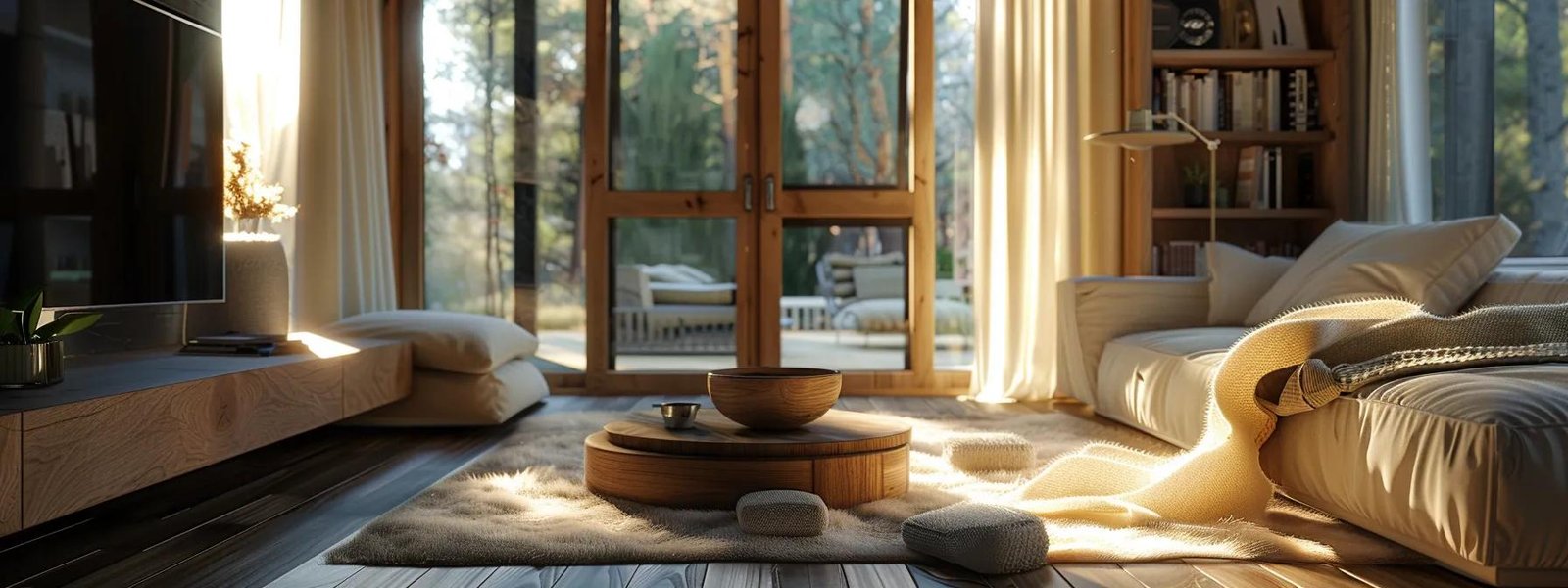
Bison wool insulation offers a non-toxic and allergen-free option, making it a safe choice for any property. Its effective moisture management prevents mould growth, while its natural fire retardant properties enhance safety. Additionally, bison wool improves indoor air quality, creating a healthier living environment. In the following sections, I will explore these health and safety benefits in detail.
Non-Toxic and Allergen-Free Insulation Option
Bison wool insulation stands out as a non-toxic and allergen-free option, making it an ideal choice for those concerned about indoor air quality. In my experience, many traditional insulation materials can release harmful chemicals or irritants, which may pose health risks, especially for individuals with allergies or respiratory issues. By opting for bison wool, I can provide a solution that not only meets insulation needs but also promotes a healthier living environment.
The natural properties of bison wool contribute to its safety and effectiveness. Unlike synthetic materials that may contain harmful additives, bison wool is free from toxins and allergens, ensuring peace of mind for homeowners and business owners alike. I have seen firsthand how this choice can lead to improved indoor air quality, creating a more comfortable space for families and employees, while also addressing common health concerns associated with traditional insulation options.
Moisture Management and Mould Prevention
In my experience, effective moisture management is one of the standout benefits of bison wool insulation. The natural lanolin content in bison wool helps wick away moisture, preventing the accumulation that often leads to mould growth. This is particularly important for maintaining a healthy indoor environment, as mould can pose serious health risks, especially for individuals with allergies or respiratory issues.
By choosing bison wool insulation, I can confidently address moisture-related concerns that many property owners face. Unlike traditional insulation materials that may absorb water and create damp conditions, bison wool actively manages humidity levels, ensuring a safer and more comfortable living space. This proactive approach not only enhances the overall health of the indoor environment but also contributes to the longevity of the building structure itself.
Fire Retardant Properties of Bison Wool
Bison wool insulation is naturally fire retardant, which enhances safety in both residential and commercial properties. This characteristic means that when exposed to flames, bison wool does not ignite easily, providing an added layer of protection for occupants. In my experience, this quality is particularly valuable in areas where fire safety is a concern, as it helps to mitigate risks associated with traditional insulation materials that may be more flammable.
Furthermore, the fire retardant properties of bison wool contribute to improved indoor air quality during a fire incident. Unlike synthetic insulation, which can release harmful toxins when burned, bison wool remains stable and does not emit dangerous fumes. This aspect not only protects the health of individuals in the space but also aligns with my commitment to providing safe and effective insulation solutions that prioritize the well-being of my clients.
Improving Indoor Air Quality
Improving indoor air quality is a significant advantage of using bison wool insulation. In my experience, many traditional insulation materials can release harmful chemicals or irritants into the air, which can negatively impact health, especially for those with allergies or respiratory issues. Bison wool, being a natural product, is free from these toxins, ensuring a healthier living environment for families and employees alike.
Moreover, the moisture-wicking properties of bison wool play a crucial role in maintaining indoor air quality. By effectively managing humidity levels, bison wool insulation prevents the growth of mould, which is a common concern with other materials. I have seen firsthand how this proactive approach not only enhances comfort but also contributes to a safer indoor atmosphere, addressing the needs of property owners who prioritize health and well-being.
Practical Applications and Installation of Bison Wool Insulation
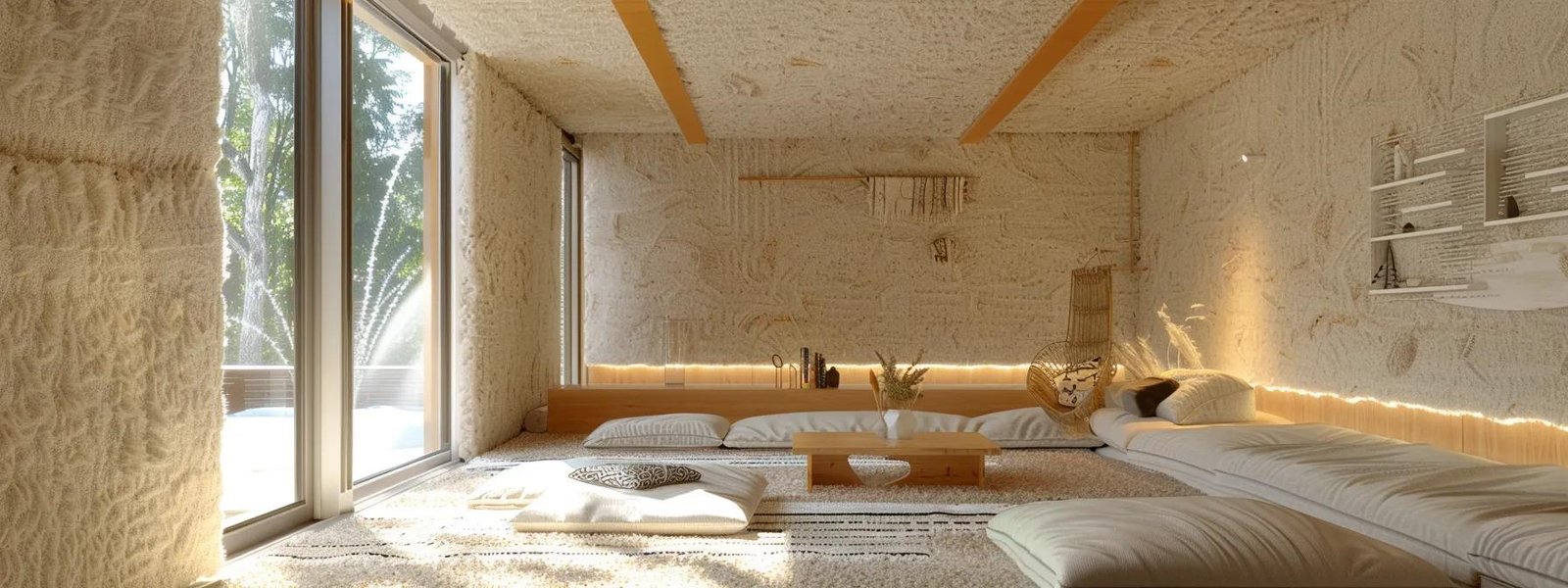
In this section, I will discuss the ideal uses of bison wool insulation in both residential and commercial buildings, highlighting its versatility. I will also cover effective installation techniques and best practices to ensure optimal performance. Additionally, I will address the longevity and durability of bison wool insulation, emphasizing the importance of working with professionals for the best results.
Ideal Uses in Residential and Commercial Buildings
Bison wool insulation is ideal for both residential and commercial buildings due to its exceptional thermal performance and moisture management capabilities. In my experience, I have found that using bison wool in homes not only enhances energy efficiency but also creates a comfortable living environment. For instance, I have installed bison wool in several residential projects, and homeowners consistently report improved indoor temperatures and reduced energy bills, making it a practical choice for energy-conscious individuals.
In commercial settings, bison wool insulation proves to be equally beneficial. I have worked on various commercial properties where the need for effective insulation is critical for maintaining a stable indoor climate. Bison wool‘s natural properties help manage humidity and prevent mould growth, which is essential for businesses that prioritize the health and comfort of their employees and customers. By choosing bison wool, I can confidently provide insulation solutions that meet the diverse needs of both residential and commercial clients, ensuring long-lasting performance and sustainability.
Installation Techniques and Best Practices
When installing bison wool insulation, I emphasize the importance of proper preparation and technique to ensure optimal performance. First, I make sure that the area is clean and dry, as moisture can compromise the insulation’s effectiveness. I then cut the bison wool to fit snugly between studs or joists, ensuring there are no gaps that could allow heat transfer. This attention to detail not only enhances thermal performance but also contributes to the overall energy efficiency of the building.
In my experience, using a breathable barrier during installation is crucial for maximizing the benefits of bison wool insulation. This barrier helps manage moisture while allowing the insulation to perform effectively. I also recommend working with professionals who understand the unique properties of bison wool, as their expertise can lead to a more efficient installation process. By following these best practices, I can confidently provide clients with a reliable insulation solution that meets their needs and enhances their indoor comfort.
Longevity and Durability of Bison Wool Insulation
Bison wool insulation is renowned for its longevity and durability, making it a wise investment for both residential and commercial properties. In my experience, this insulation can last for decades without losing its effectiveness, thanks to its natural resilience and ability to withstand various environmental conditions. Unlike traditional materials that may degrade over time, bison wool maintains its insulating properties, ensuring that property owners enjoy consistent energy efficiency and comfort for years to come.
Additionally, the durability of bison wool insulation is enhanced by its natural resistance to moisture and mould, which are common issues with other insulation types. I have seen firsthand how properties insulated with bison wool remain free from dampness and related problems, contributing to the overall health of the building. By choosing bison wool, I can confidently assure clients that they are selecting a long-lasting solution that not only meets their insulation needs but also supports a sustainable and healthy living environment.
Working With Professionals for Optimal Installation
When it comes to installing bison wool insulation, working with professionals is essential for achieving optimal results. I have seen firsthand how experienced installers understand the unique properties of bison wool, ensuring that it is fitted correctly to maximize its thermal performance and moisture management capabilities. Their expertise not only guarantees a snug fit but also helps prevent common issues such as air leaks, which can undermine the insulation’s effectiveness.
Additionally, professionals are equipped with the right tools and techniques to handle bison wool insulation safely and efficiently. I often recommend hiring experts who are familiar with the best practices for installation, as they can navigate challenges that may arise during the process. This approach not only saves time but also ensures that the insulation performs at its best, providing long-lasting comfort and energy efficiency for both residential and commercial properties.
Conclusion
Exploring the superior benefits of bison wool insulation reveals its exceptional thermal performance, moisture management, and eco-friendliness compared to traditional options. Its natural properties not only enhance energy efficiency but also promote a healthier indoor environment, making it a smart choice for both residential and commercial properties. By choosing bison wool, property owners can significantly reduce their environmental impact while enjoying long-lasting comfort and cost savings. Embracing bison wool insulation is a proactive step towards sustainable living and improved building performance.
Your Guide to Spray Foam Insulation in Ottawa
Are you aware that proper insulation can significantly reduce your energy bills, especially in Ottawa‘s climate? This guide will delve into the advantages of spray foam insulation, a method surpassing traditional materials like cellulose and fiber. We’ll discuss how to select the ideal insulation for various parts of your home, including the garage and ceiling, and what to expect during the installation process. By reading on, you’ll learn how to prepare your home for installation and understand the potential cost savings. If you’re concerned about the presence of asbestos or inefficient insulation in your home, this article will provide you with the knowledge to address these issues effectively.
Learn About the Benefits of Spray Foam Insulation in Ottawa

As a seasoned expert in home improvement, I’ve seen firsthand how spray foam insulation can transform a space. It’s a game-changer for enhancing energy efficiency, particularly in areas like floors and kitchens where heat loss is common. This insulation method not only helps in retaining warmth and managing water barriers but also plays a crucial role in maintaining a consistent temperature throughout your home. In the following sections, I’ll delve into how spray foam insulation can be a smart investment for your Ottawa residence, ensuring comfort and cost savings.
Improve Energy Efficiency With Spray Foam Insulation
When I assess a home’s energy efficiency, one of the first things I consider is the insulation. Spray foam, in particular, stands out for its superior sealing properties. Unlike traditional mineral wool, spray foam expands to fill every nook and cranny, creating an airtight barrier that significantly reduces heat loss through walls and ceilings. This means your heating system doesn’t have to work as hard, leading to lower energy bills and a more comfortable living environment.
Moreover, the moisture-resistant nature of spray foam insulation is a boon for Ottawa‘s variable climate. It helps prevent the growth of mold and mildew, which can compromise air quality and the structural integrity of your home. Additionally, spray foam‘s density makes it an excellent noise dampener, providing a quieter and more serene indoor atmosphere. These practical benefits underscore why spray foam is a smart choice for those looking to improve their home’s energy efficiency and overall comfort.
Enhance Home Comfort and Temperature Regulation
My experience with insulation in Ottawa homes has taught me the importance of maintaining a stable indoor climate. Spray foam insulation excels in this regard, as it creates a seamless thermal envelope that keeps the cold out and the warmth in. This results in a consistent temperature throughout your home, enhancing comfort and reducing the strain on your heating and cooling systems. It’s a health-conscious choice too, as it minimizes the risk of mold growth by sealing potential moisture entry points.
Compared to traditional glass wool, spray foam‘s efficiency in temperature regulation is unmatched. I’ve seen homes where the installation of spray foam has led to immediate improvements in warmth during our frigid winters. The insulation’s robust barrier against external temperature fluctuations means that families in Ottawa can enjoy a cozy, draft-free environment year-round, without the worry of mold or other health hazards associated with poor insulation.
Choose the Right Spray Foam Insulation for Your Ottawa Home
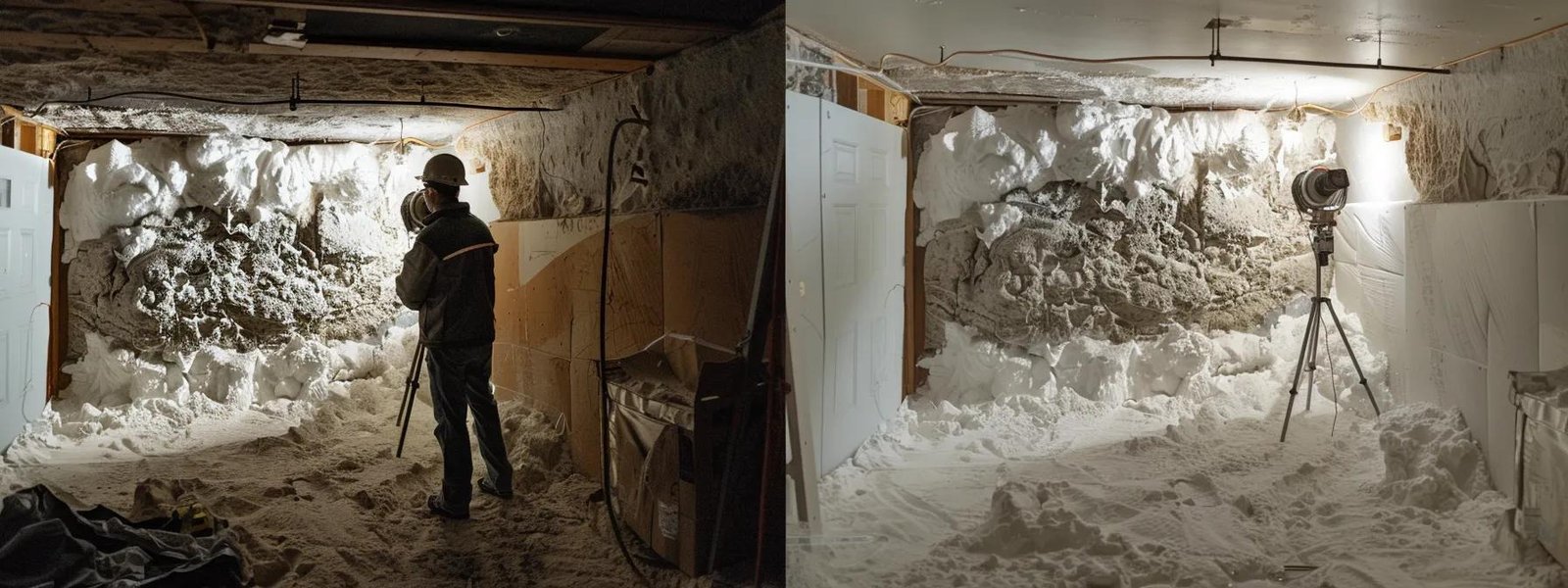
Choosing the right spray foam insulation for your Ottawa home involves a careful comparison of open-cell and closed-cell options. As someone who has worked with various insulation companies in Ottawa, I understand the significance of selecting a product that aligns with your specific needs. Factors such as the location of installation, whether it’s the basement or another area, and the desired level of temperature control play a pivotal role. My insights will guide you through these considerations, ensuring your choice leads to optimal customer satisfaction and energy efficiency.
Compare Open-Cell and Closed-Cell Spray Foam Options
In my professional experience, understanding the difference between open-cell and closed-cell spray foam is crucial for Ottawa‘s climate. Open-cell foam is more permeable, making it better for sound dampening and installations where flexibility is needed. However, it’s less effective against condensation, which can be a concern in our humid seasons. Closed-cell foam, on the other hand, offers a higher density that contributes to energy conservation and can support structural integrity, aligning with building code requirements for certain areas of your home.
When I advise clients on insulation choices, I emphasize the importance of considering the specific needs of their space. Closed-cell spray foam, with its impermeability, excels in preventing moisture ingress and is ideal for Ottawa‘s variable weather, where glass-like rigidity can withstand extreme temperatures. Open-cell foam may be the more cost-effective option for interior partitions where moisture is less of a concern. Each type has its place in energy-efficient home design, and I guide homeowners to make an informed decision that will serve them well for years to come.
Consider Factors Influencing Your Insulation Choice
When I guide clients through the selection of spray foam insulation, I stress the importance of considering the specific areas of application. For instance, the nozzle precision required for insulating a tight crawl space differs from that needed for a spacious attic. Each inch of coverage matters, and the right choice can turn your insulation into a long-term investment that pays dividends in energy savings and home comfort.
Moreover, the unique conditions of your Ottawa home play a significant role in the insulation decision-making process. I’ve seen how the proper insulation can mitigate issues in areas prone to temperature extremes, such as attics during our harsh winters or crawl spaces that can become damp. My expertise ensures that your investment in spray foam insulation is tailored to provide maximum efficiency and durability, safeguarding your home against the elements.
Prepare Your Home for Spray Foam Insulation Installation
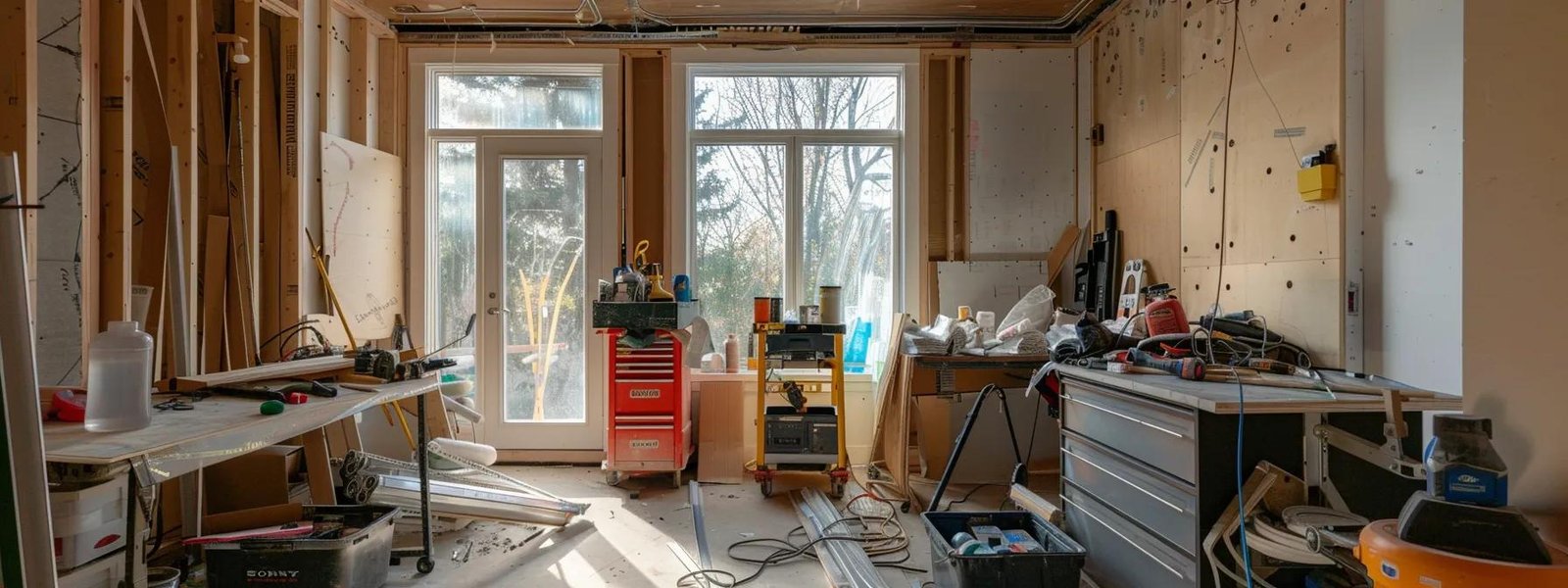
Before embarking on the installation of spray foam insulation in your Ottawa home, a thorough inspection of the areas requiring insulation is essential. I’ll guide you through the process of preparing your space, which includes removing any obstacles and ensuring workspaces are secure. This preparation is a critical step in enhancing your building envelope with a vapor barrier that contributes to cost savings and complements any renovation efforts. The upcoming sections will provide you with practical insights on how to ready your home for cellulose insulation, ensuring a smooth and efficient installation process.
Inspect Areas Needing Insulation Application
Before the application of polyurethane foam, I meticulously inspect each area of your Ottawa home to identify any gaps around windows or doors that could lead to heat transfer. This thermal insulation is highly effective, but its performance hinges on precise application. Ensuring that every potential air leak is accounted for allows the foam to fully expand and create an impenetrable barrier against the cold, which is essential for maintaining a warm and energy-efficient home.
During my inspections, I pay close attention to the unique contours and crevices of your space. It’s crucial to assess the condition of existing insulation and determine the compatibility with polyurethane foam. By doing so, I can guarantee that the thermal insulation will adhere properly and provide the maximum benefit, reducing energy costs and enhancing the comfort of your living environment throughout the diverse Canadian seasons.
Remove Obstacles and Secure Workspaces
Before the installation of spray foam, which acts as a radiant barrier, I ensure the workspace is clear of any obstructions that could hinder the application process. This involves removing furnishings, covering electrical outlets, and securing any loose wires or pipes. A clean and accessible area allows for a more efficient installation, ensuring that the foam can be applied evenly and reach its full potential as an insulator, ultimately contributing to a significant return on investment through energy savings.
It’s also crucial to assess and improve ventilation in the space where foam insulation will be installed. Proper airflow is essential to maintain indoor air quality and prevent moisture buildup, which can compromise the effectiveness of both fiberglass and foam insulation. By taking these preparatory steps, I help clients create an environment that maximizes the benefits of their insulation choice, leading to a more comfortable and energy-efficient home.
Understand the Spray Foam Insulation Installation Process

Embarking on the installation of spray foam insulation in Ottawa requires a methodical approach, particularly when applying it to critical areas like the roof and ductwork. As a professional in the construction industry, I’m well-versed in the steps necessary to ensure the spray foam adheres properly, transforming it into an effective building material. In the upcoming sections, I’ll outline the professional application process and the safety measures that are paramount during installation. This insight will equip you with the knowledge to understand the precision and care that goes into using spray foam as an insulation choice for your property.
Follow the Steps Professionals Take During Application
In my role as a point of sales expert, I’ve observed that the application of spray foam insulation is a meticulous process that professionals handle with precision. Initially, the area is prepared to ensure that surfaces like concrete are clean and dry, which is vital for the foam to adhere correctly and provide effective waterproofing. The spray foam is then applied in layers, with careful attention to achieving a uniform thickness that enhances both soundproofing and indoor air quality.
Throughout the installation, I ensure that the spray foam is evenly distributed, paying particular attention to potential problem areas that could compromise the insulation’s performance. This attention to detail is crucial for creating an airtight seal, which is the cornerstone of spray foam‘s superior insulating properties. By overseeing this process, I help guarantee that the insulation not only meets but exceeds the expectations for energy efficiency and comfort in Ottawa homes.
Recognize Safety Measures During Installation
During the installation of spray foam insulation, I prioritize safety measures to protect both the installers and the home environment. This includes wearing appropriate personal protective equipment (PPE) such as respirators and gloves, as the materials used can be hazardous during application. Ensuring a well-ventilated space is also critical to prevent the buildup of fumes, which is particularly important in Ontario‘s diverse range of home structures, from heritage to modern builds.
Moreover, I always advise clients to consider environmentally friendly options that align with their energy goals and budget. While spray foam is more effective than traditional wool insulation, it’s essential to choose products that have a lower environmental impact. By selecting high-quality, sustainable materials, homeowners in Ottawa can improve their energy efficiency while also contributing to a healthier planet.
Calculate Costs and Savings of Spray Foam Insulation
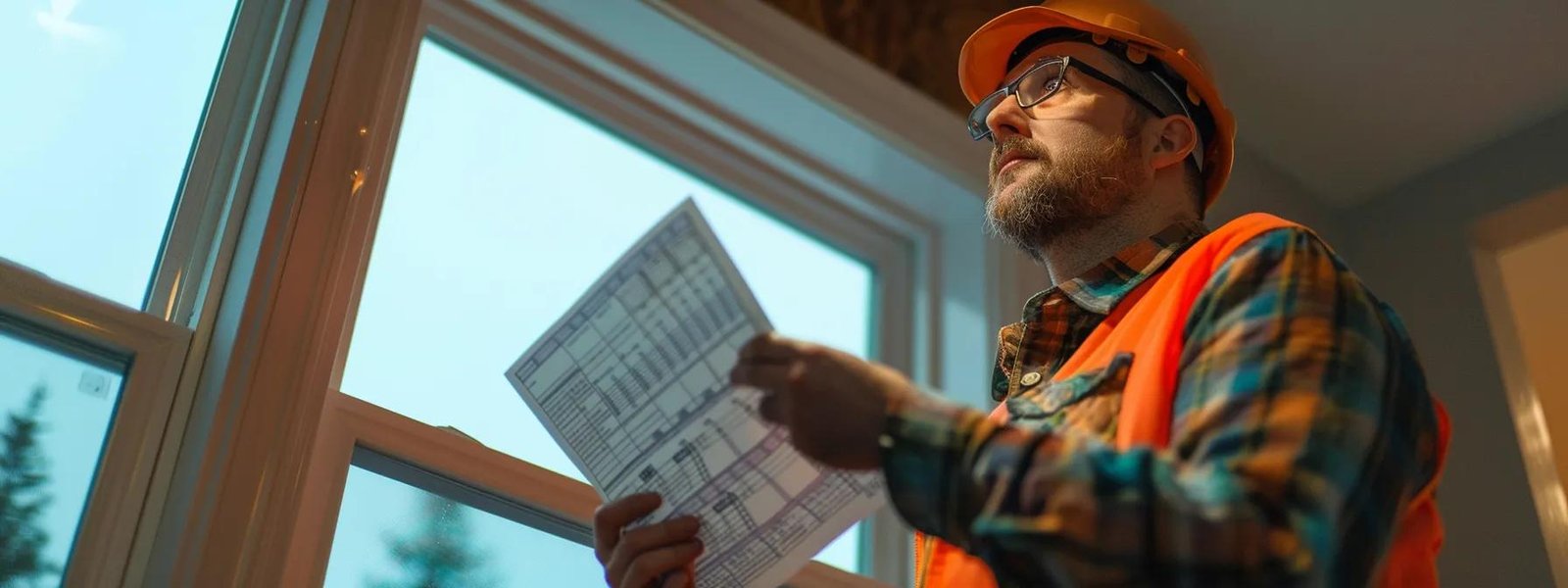
Understanding the financial aspect of spray foam insulation is crucial for Ottawa homeowners. I’ll help you weigh the initial investment against the long-term savings, considering factors like plumbing protection, fireproofing, and the impact on climate change. We’ll also navigate Ottawa‘s insulation rebates and financing options, ensuring you make an informed decision about this polyurethane solution. These insights are designed to provide a clear picture of both upfront costs and potential energy savings.
Determine Initial Investment vs. Long-Term Savings
When I conduct an inspection for spray foam insulation in Ottawa homes, I always emphasize the importance of considering the initial investment against the potential long-term savings. The upfront cost includes not only the materials but also the skilled labour required for a precise application, ensuring spaces are sealed against pests and weather. However, the reduction in energy bills and the added warranty on the insulation can lead to significant savings over time, making it a wise financial decision for homeowners.
My experience has shown that while the initial outlay for spray foam insulation may seem substantial, the benefits quickly become apparent. The enhanced energy efficiency of your space can result in lower heating and cooling costs, and the added protection against pests and moisture can prevent costly damages. Moreover, the longevity of spray foam often means that the investment is a one-time expense, with the insulation maintaining its performance for years without the need for replacement.
Review Financing and Rebate Options in Ottawa
Exploring financing and rebate options for spray foam insulation in Ottawa is a step I strongly recommend to my clients. The city offers various programs that can help offset the initial costs, making this energy-efficient upgrade more accessible. I’ve assisted numerous homeowners in navigating these financial incentives, which can significantly reduce the burden of upfront expenses while promoting sustainable living practices.
My experience has shown that taking advantage of available rebates can lead to substantial savings on spray foam insulation projects. In Ottawa, these incentives are often tied to energy conservation initiatives, rewarding residents for their commitment to reducing their carbon footprint. I guide my clients through the application process, ensuring they meet the criteria to benefit from these cost-saving opportunities.
Find Trusted Spray Foam Insulation Professionals in Ottawa
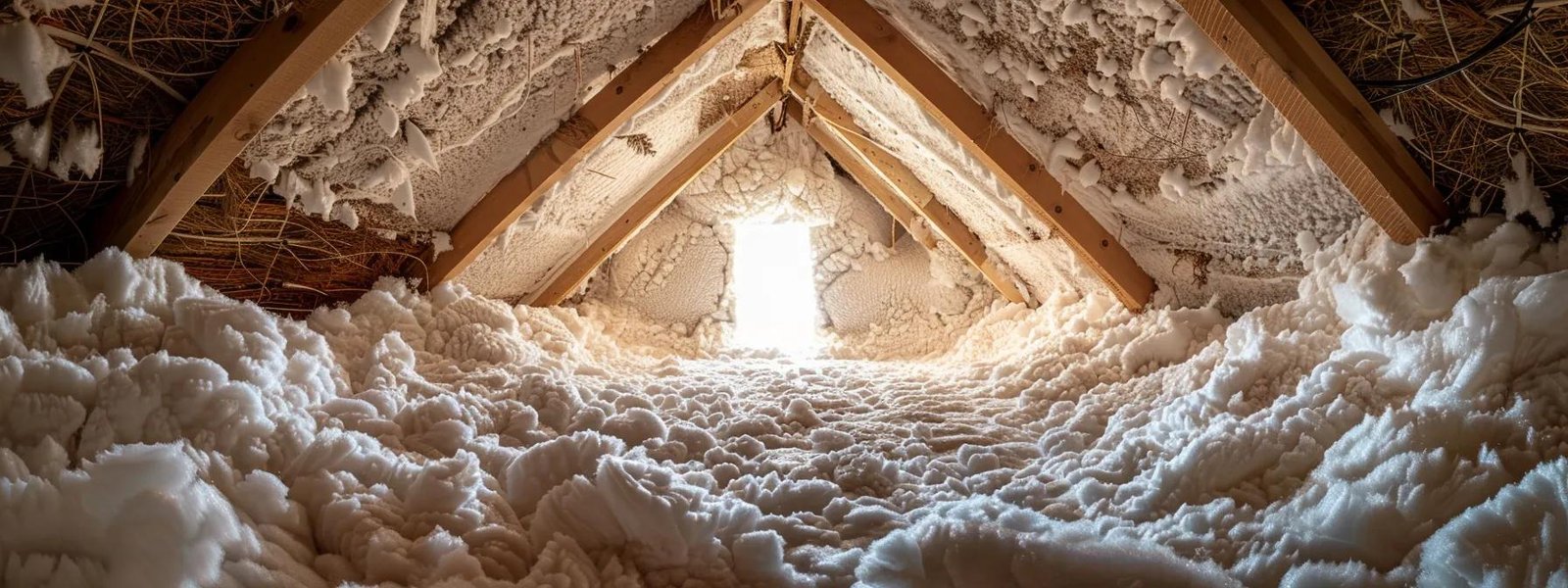
Choosing the right professional for your spray foam insulation is critical to the success of your project in Ottawa. I’ll help you identify key factors to consider when selecting an installer, ensuring they meet the high standards necessary for a quality job. It’s also wise to seek recommendations and read customer reviews to gauge the reliability and expertise of potential contractors. These steps are essential in finding a trusted professional who can deliver the energy efficiency and comfort you expect from your insulation investment.
Identify Key Factors When Selecting an Installer
In my professional journey, I’ve learned that the expertise and reliability of the installer are paramount when selecting a professional for spray foam insulation in Ottawa. It’s essential to verify their certifications and experience in the field, ensuring they’re well-versed in the latest application techniques and safety protocols. I always recommend choosing someone who has a proven track record of delivering quality workmanship and who can provide references or case studies from past projects.
Another critical factor is the installer’s understanding of Ottawa‘s specific climate challenges and building codes. I advise clients to engage with professionals who conduct comprehensive assessments of their property to tailor the insulation solution to their unique needs. This approach not only ensures optimal thermal efficiency but also aligns with the long-term durability and performance of the insulation, ultimately contributing to the comfort and energy savings of your home.
Seek Recommendations and Read Customer Reviews
In my experience, tapping into the collective wisdom of others who’ve already navigated the path of insulation upgrades can be invaluable. I encourage you to seek recommendations from friends or family members who have recently invested in spray foam insulation in Ottawa. Their insights can lead you to skilled professionals whose work has stood the test of time, ensuring you partner with a service provider who is both reliable and has a reputation for excellence.
Additionally, I’ve found that reading customer reviews offers a transparent look at the quality of service and customer satisfaction. It’s essential to peruse these testimonials on independent platforms or the insulation company’s website. This step can provide you with a clearer understanding of the installer’s expertise and their ability to deliver on the promises of energy efficiency and comfort that spray foam insulation is known for.
Conclusion
Spray foam insulation stands as a superior choice for Ottawa homeowners, offering unmatched energy efficiency and comfort through its airtight sealing capabilities. It provides a consistent indoor climate, reduces energy costs, and enhances the overall living environment by mitigating noise and moisture-related issues. Selecting the right type of spray foam and a reputable installer is crucial, as it ensures tailored solutions that meet specific home needs and withstand Ottawa‘s unique weather conditions. Ultimately, investing in spray foam insulation is a wise financial decision, yielding long-term savings and contributing to a sustainable, energy-conscious home.
Spray Foam vs. Traditional Insulation: Attic Cost Comparison
Enhance Your Attic Insulation: Cost Comparison of Spray Foam vs. Traditional Insulation – Find the Best Solution Today!
Continue readingTop Insulation Contractors in Ottawa for Energy Savings
Optimize your energy savings with top insulation contractors in Ottawa. Trusted experts for efficient solutions to combat high energy costs!
Continue readingOptimize Comfort: Attic Insulation Solutions in Ottawa
Efficient Attic Insulation Solutions in Ottawa for Enhanced Comfort – Insulation Ottawa Experts Offer Spray Foam Insulation
Continue readingOptimize Your Ottawa Home: Why Upgrade Insulation Matters
Enhance Your Ottawa Home with Insulation Upgrades: Discover the Impact of Enhanced Insulation on Your Property’s Comfort and Energy Efficiency.
Continue reading